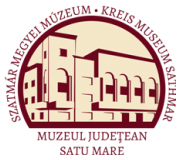Ardelean, Gavril (szerk.): Satu Mare. Studii şi comunicări. Seria ştiinţele naturale 6. (2005)
Researches ont he prey selection of barn owl (tyto alba) in Statu Mare county
Satu Mare - Studii şi Comunicări Ştiinţele Naturale — Voi. VI (2005) Bray - Curtis Cluster Analysis (Single Link) ■c 0, % Similarity 50, c4 m4 e4 c3 m3 e3 c2 m2 e2 d ml e1 100 el ml cl e2 m2 c2 e3 m3 C3 e4 m4 c4 el 94,3723 84,6465 69,2121 74,611 70,3963 71,2121 73,064 73,0838 73,4587 74,4868 75,7576 Ml 83,8889 72,5714 77,3166 71,1539 74,5238 76,7196 75,1401 73,5222 74,0783 75,3247 cl 64 71,3513 70,9402 67,7778 68,8889 74,902 71,0345 75,4839 76,3636 e2 87,4595 81,641 70 71,8519 65,098 54,4827 57,9355 57,6364 M2 89,2585 76,8468 77,4775 74,8278 62,4417 64,7777 62,285 c2 73,8462 72,6496 70,2866 59,9469 62,2829 59,7902 e3 91,1111 83,7255 67,5862 72,1505 67,2727 M3 84,0958 71,7752 73,9546 70,2862 c3 76,6058 81,2777 76,2923 e4 92,5473 91,2226 M4 92,7419 c4 Figure nr. 2: Results of the second cluster analyses (c — captures, m and e = pellets, (different captures periods are numbered) Conclusion By do not taking into account the differences due to the two methods the results are similar, namely there are not significant differences between the captured species and the species collected from the pellets. The conclusion is that there is a tight relation between the population density of captured species and the structure of bird’s feeding. Excluding those species which were impossible to capture but which exist in the pellets the similarity between the results is increasing. The feeding of the owls reflects the population density of disposable prey species (mice, voiles, shrews) without preference for some taxons. That fact that the common vole occupies the first place of the owl’s food structure it can be explained rather with the high abundance of this species in the foraging habitat of the owls than the owl preferences of this species. References Barnett, A., Dutton, J. 1995. Small Mammals . Expedition Field Techniques. Royal Geographical Society, Kensington Gore. Bellocq, M. I. 1998. Prey selection by breeding and nonbreeding Barn Owls in Argentina. The Auk 115(1): 224-229. Bősé, M., Guidali, F. 2001. Seasonal and geographic differences in the diet of the Barn owl in an agroecosystem in nrthern Italy. Journal of Raptor Research 35(3): 240-246. Burton, A.(Ed.) 1992. Owls of the World. Eurobook Limited, Italy. Csorba G., Pecsenye K. 1996. Emlősök és a genetikai sokféleség monitorozása. MTTM, Budapest Emién, J.M. 1966. The role of time and energy in food preference. American Naturalist 100: 611- 617. Evans, F. C, Emlen, J. T. 1947. Ecological notes on the prey selected by Barn Owl. The Condor 49(1): 3-9. 115
